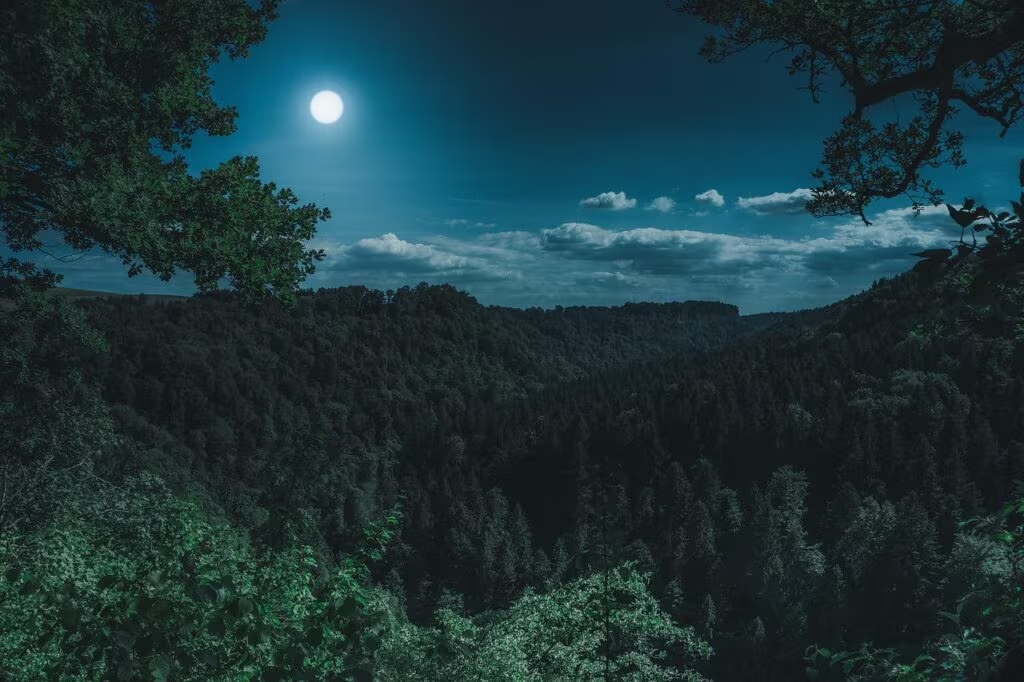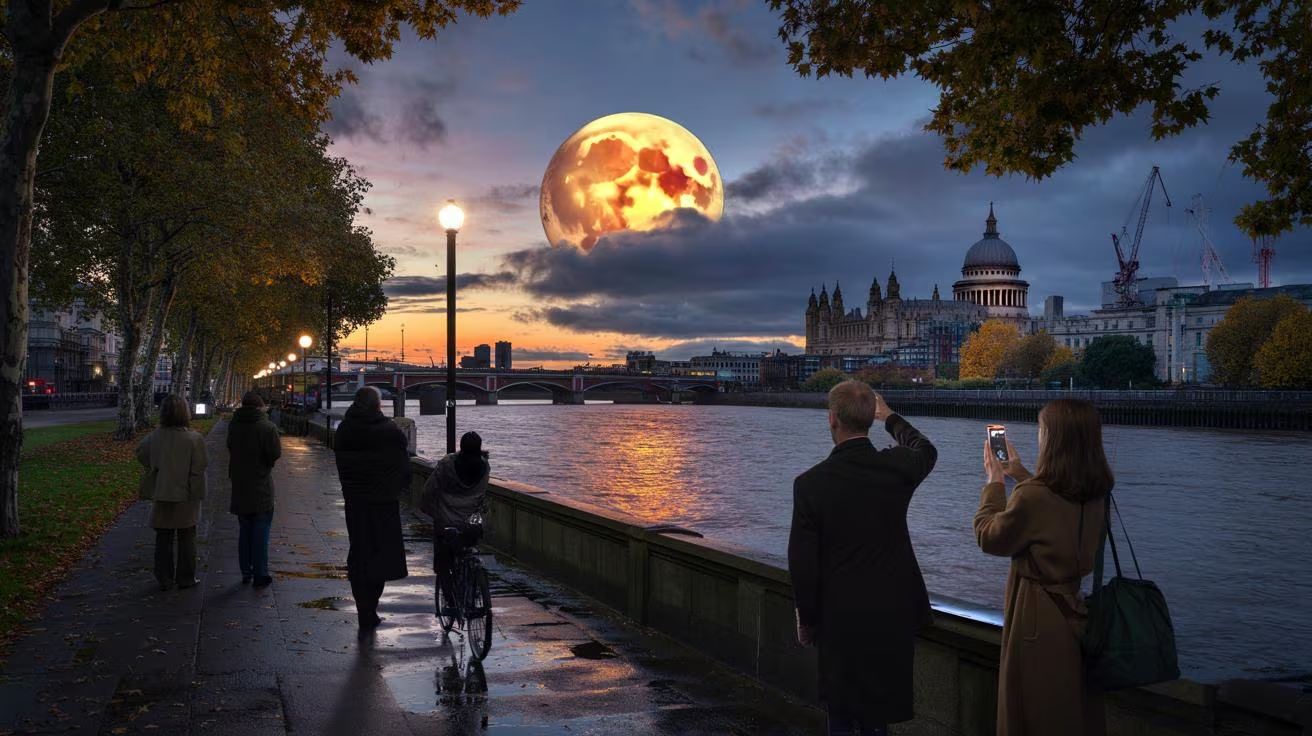Celestial Spectacle: The Harvest Supermoon Arrives October 7th
Stargazers across the UK and beyond are preparing for a spectacular astronomical event: the Harvest Supermoon of 2025. This celestial display, which marks the first Supermoon of the year, promises a stunning view as the Moon appears significantly larger and brighter than usual. Following recent weather disturbances, including the passing of Storm Amy, conditions are anticipated to be clearer, offering optimal viewing opportunities.
This event is not just a full moon; it is the convergence of two distinct astronomical phenomena: the Harvest Moon and a Supermoon. For observers in the UK, the Moon is expected to rise on Tuesday, October 7th, reaching its peak visibility shortly after sunset.

Essential Viewing Guide: Time, Date, and Visual Impact
For those hoping to catch the peak of this impressive display, timing is crucial. The Moon will become visible as it rises above the horizon, an effect that often enhances its perceived size due to the ‘Moon Illusion.’
Key Details for UK Viewers
- Date: Tuesday, October 7, 2025
- Peak Rise Time: Approximately 18:20 BST (British Summer Time)
- Visual Enhancement: The Moon will appear up to 14% bigger and 30% brighter than when it is at its farthest point from Earth (apogee).
This window around 18:20 BST is particularly important because the Moon will be low in the sky, maximizing the visual impact of the Moon Illusion, where foreground objects make the Moon seem colossal.
Maximizing Your Viewing Experience
To ensure you don’t miss the dramatic rise of the Harvest Supermoon, experts recommend the following practical steps:
- Find the Horizon: Position yourself with an unobstructed view of the eastern horizon, as this is where the Moon will ascend.
- Avoid Light Pollution: Move away from bright city lights if possible. Even a short drive to a darker area can dramatically improve visibility.
- No Equipment Needed: While binoculars or a telescope will enhance surface details, the Supermoon effect is easily observable with the naked eye.
- Check Local Forecasts: Although clearer weather is generally expected, consult local weather reports for the evening of October 7th to plan around any localized cloud cover.
The Science Behind the Supermoon Phenomenon
The term “Supermoon” is popular, but astronomically, it refers to a perigee syzygy—a full moon or new moon that occurs when the Moon is near its closest approach to Earth in its elliptical orbit (perigee). The Moon’s orbit is not a perfect circle; it is an ellipse, meaning the distance between Earth and the Moon constantly changes.
When the full phase of the Moon coincides with perigee, the result is a Supermoon. Conversely, when the full moon coincides with apogee (the farthest point), it is sometimes referred to as a ‘Micromoon’.
Quantifying the Difference
The figures of 14% larger and 30% brighter are calculated by comparing the Moon’s appearance at perigee (closest) versus apogee (farthest). While 14% may not sound significant, the difference in brightness is often quite noticeable, especially to seasoned sky watchers.

The Significance of the Harvest Moon
This particular Supermoon is also the Harvest Moon. This traditional name is given to the full moon that occurs closest to the autumnal equinox (which typically falls around September 22nd or 23rd in the Northern Hemisphere).
Historically, the Harvest Moon was vital to agricultural communities. Unlike other full moons, which rise significantly later each night, the Harvest Moon rises only slightly later for several consecutive evenings. This provided crucial extra hours of bright moonlight after sunset, allowing farmers to continue harvesting their crops late into the night before the first hard frost set in. This extended period of light made it one of the most important full moons of the year.
Naming Conventions
Lunar cycles have been tracked and named by various cultures for centuries. While the Harvest Moon is tied to the equinox, other full moons have names reflecting the season or natural events, such as the Snow Moon (February) or the Strawberry Moon (June). The Harvest Moon, however, is unique in its direct connection to the timing of the autumnal equinox, meaning it can occur either in September or, as in October 2025, in early October.
Key Takeaways for the October 7th Supermoon
This confluence of astronomical factors—the Moon being close to Earth (Supermoon) and its timing near the equinox (Harvest Moon)—makes the October 7th event a must-see for casual observers and dedicated astronomers alike.
- The Closest Approach: The Moon will be near its perigee, resulting in the maximum size and brightness increase.
- The Best Time: Aim to view the Moon just as it rises around 18:20 BST on Tuesday, October 7th, to benefit from the dramatic horizon effect.
- Historical Context: The Harvest Moon name reflects its historical importance in providing light for late-season agricultural work.
- Weather Window: Clearer skies are anticipated following recent weather systems, increasing the likelihood of an unobstructed view.

Conclusion: Don’t Miss the First Supermoon of 2025
The 2025 Harvest Supermoon offers a rare opportunity to witness the Moon at its most impressive. The combination of its proximity to Earth and the atmospheric effects of the Moon Illusion during moonrise ensures a truly memorable sight. For those in the UK, setting an alert for 18:20 BST on October 7th is the key to catching the moment the Moon begins its ascent, transforming the evening sky with its enhanced luminosity and scale. This event serves as a powerful reminder of the dynamic mechanics governing our solar system and the historical connection humanity shares with the lunar cycle.
Original author: Sofeminine Editorial
Originally published: October 31, 2025
Editorial note: Our team reviewed and enhanced this coverage with AI-assisted tools and human editing to add helpful context while preserving verified facts and quotations from the original source.
We encourage you to consult the publisher above for the complete report and to reach out if you spot inaccuracies or compliance concerns.

